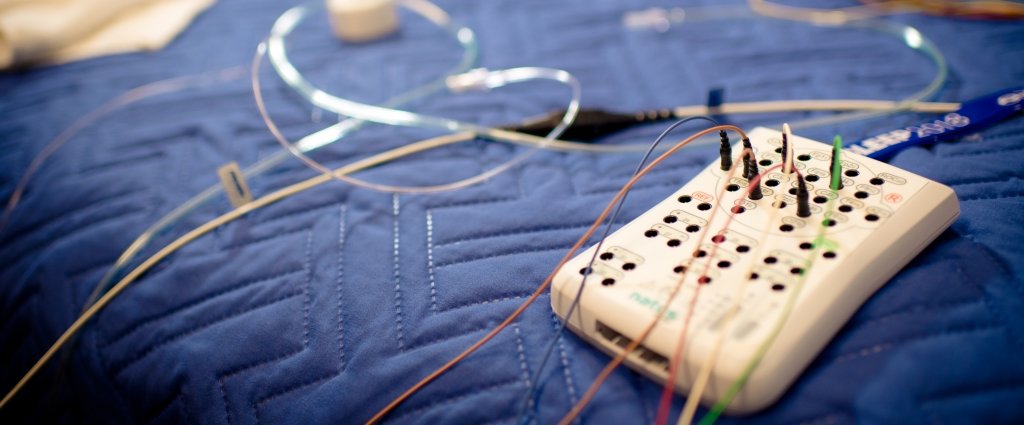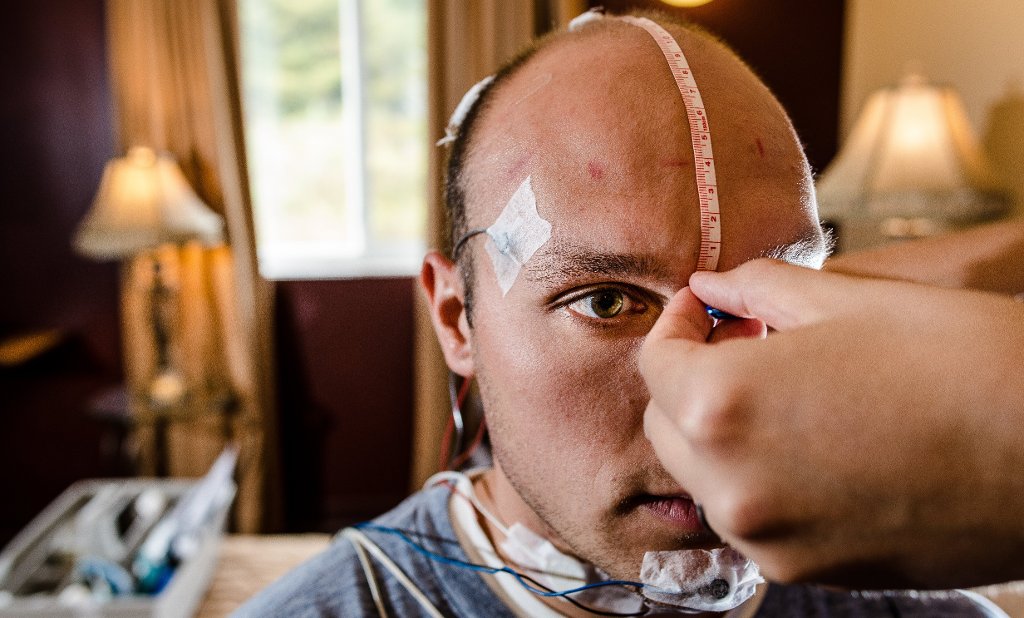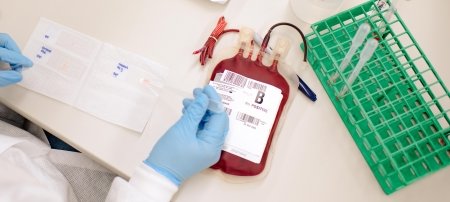What a Sleep Study Can Reveal About Fibromyalgia
Research engineers and sleep medicine specialists from two Michigan universities have joined technical and clinical hands to put innovative quantitative analysis, signal-processing technology and computer algorithms to work in the sleep lab. One of their recent findings is that a new approach to analyzing sleep fragmentation appears to distinguish fibromyalgia patients from healthy controls.
Joseph W. Burns, a research scientist and engineer at the Michigan Tech Research Institute (MTRI); Ronald D. Chervin, director of the University of Michigan’s Michael S. Aldrich Sleep Disorders Laboratory; and Leslie Crofford, director of the Center for the Advancement of Women’s Health at the University of Kentucky, report the results of their study in the current issue of the journal Sleep Medicine
MTRI, a freestanding research institute acquired by Michigan Tech in 2006 and based in Ann Arbor, specializes in remote sensors that collect data, and in signal processing, using algorithms or computer programs to analyze and correlate the information the sensors gather. MTRI has developed an ongoing collaboration with the University of Michigan’s sleep laboratory, one of the nation’s leading clinical and research centers specializing in sleep medicine.
This several-year collaboration provided MTRI’s first opportunities to apply quantitative analysis, remote sensing technology and computer algorithms to clinical challenges, said Burns. “In this case, our analyses of sleep stage dynamics suggest potential clinical relevance,” he noted. Newly explored measures of sleep fragmentation seem to correlate—at least in this study—with levels of pain reported by fibromyalgia patients.
Burns, who has a PhD in electrical engineering, finds that more and more of his research is taking a biomedical turn. He and his team are working with Chervin to use signal-processing technology to record and analyze the brain waves and biophysical responses of children and adults with a variety of sleep disorders. They hope it will help them better understand conventional sleep patterns, as well as diagnose and treat sleep disorders.
They presented the results of research related to assessment of sleep-disordered breathing and sleep fragmentation at Sleep 2008, an international sleep research conference, in Baltimore in June.
Patients who may have sleep disorders often undergo complicated and expensive tests in sleep laboratories, Chervin explained. These studies collect an assortment of biophysical data that reflect brain, cardiovascular and muscle activity throughout the night. Up to now, these data had to be analyzed manually by highly trained technicians.
“We are collaborating to find new ways to analyze routinely collected data in a way that will be meaningful to the patient’s health and will help us understand how sleep disorders affect brain functions,” he said.
Automated analysis of data potentially can provide improved assessments and reduce the cost of sleep studies, Burns noted. For example, MTRI and UM have developed an automated technique for assessing the severity of sleep-disordered breathing, using just two signals—brain waves and respiration—instead of the dozen or more signals typically needed for standard visual scoring of a sleep study.
“It may even become possible for people to take sleep tests—simpler and more effective than some of those currently available—at home where they can sleep in their own familiar bedrooms,” he suggested.
Both partners are reaping the benefits of the collaboration, Burns said. Not only can automated technology improve clinical research; what the MTRI scientists have learned about biomedical techniques such as brain mapping is informing their more traditional work on radar and optical sensing technology.
Michigan Tech and UM have patented the new algorithm for assessing sleep-disordered breathing, which enables them to study what the extra work of breathing does to the brainwaves of patients with sleep apnea, a sleep disorder in which breathing stops briefly many times during sleep. Sleep apnea has been linked to excessive daytime sleepiness, cognitive changes and other health effects, and to hyperactive behavior in children.
The universities have filed an application for another patent for an algorithm that helps automate the assessment of patients with REM Sleep Behavior Disorder. People with this neurological condition act out their dreams during Rapid Eye Movement (REM) sleep, which can cause them to harm themselves or a bed partner while they are asleep.
Burns and Chervin published the results of that study in the December 2007 issue of the journal Sleep.
The team plans to investigate other sleep disorders and to continue to develop automated processing techniques to improve the performance and efficiency of sleep disorder diagnosis and assessment.
Michigan Technological University is a leading public research university, conducting research, developing new technologies and preparing students to create the future for a prosperous and sustainable world. Michigan Tech offers more than 120 undergraduate and graduate degree programs in engineering, forestry and environmental sciences, computing, technology, business and economics, natural and physical sciences, arts, humanities and social sciences.
Internationally renowned for patient care, research and education, the University of Michigan Health System has been a leader in American medicine for more than a century and a half. UMHS includes the U-M Medical School, three nationally ranked hospitals, 40 outpatient health centers, and a number of specialized programs for treatment and research in cancer, cardiovascular disease, geriatrics, depression, diabetes, vision, women’s health, organ transplant and other specialties. Its biomedical research community is one of the nation’s largest, winning more than $342 million in funding each year while generating more than 120 newly disclosed inventions annually.
Michigan Technological University is an R1 public research university founded in 1885 in Houghton, and is home to nearly 7,500 students from more than 60 countries around the world. Consistently ranked among the best universities in the country for return on investment, Michigan's flagship technological university offers more than 185 undergraduate and graduate degree programs in science and technology, engineering, computing, forestry, business, health professions, humanities, mathematics, social sciences, and the arts. The rural campus is situated just miles from Lake Superior in Michigan's Upper Peninsula, offering year-round opportunities for outdoor adventure.




Comments